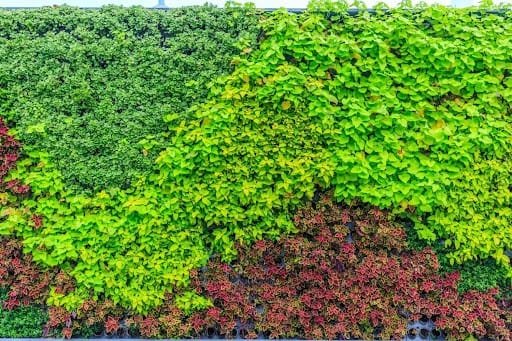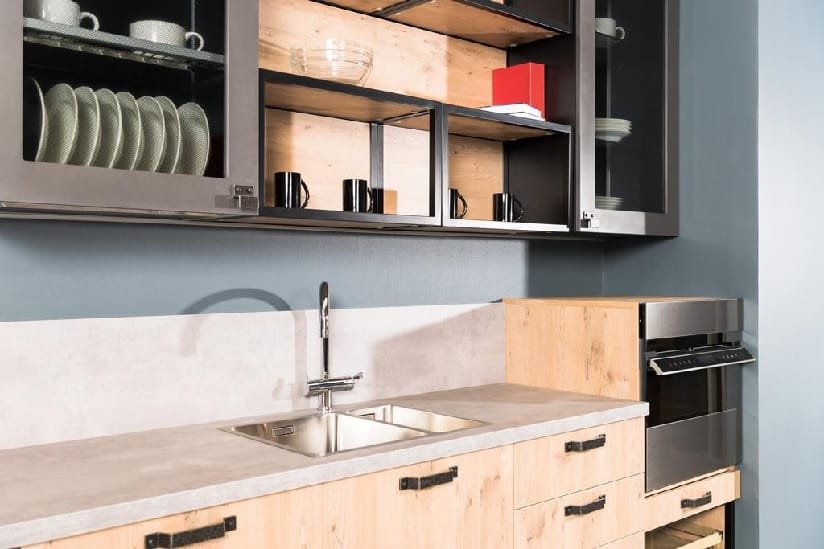In today’s competitive housing market, first impressions matter more than ever.
Whether you’re planning to sell your home or want to turn heads in the neighborhood, adding a vertical garden is a stylish and sustainable way to enhance your home’s exterior.
Vertical gardens are an increasingly popular landscaping trend that can significantly enhance both the curb appeal and the value of residential and commercial properties.
Their benefits extend beyond simple beautification, offering environmental, economic, and lifestyle advantages. Let’s see how vertical gardens can boost curb appeal and property value.
What are vertical gardens?
Vertical gardens, also known as green or living walls, involve growing plants upward using wall-mounted systems, freestanding structures, or hanging setups. These gardens can range from DIY pallet herb walls to professionally installed green facades.
They’re a space-saving and visually striking way to grow flowers, herbs, vegetables, or decorative plants in both indoor and outdoor environments.
Different types of vertical gardens
- Wall-mounted planter systems
These planter systems can be easily described as panels or frames mounted directly to a wall, holding rows of pockets, pots, or troughs for planting.
Wall-mounted planter systems are ideal on outdoor fences, interior feature walls, and balconies, and are great for herbs, flowers, and small edibles.
Depending on what type of wall-mounted planter system you go for, you should know that some come with built-in irrigation for low-maintenance care. For others, you’ll need to come up with the best watering solution.
- Trellis systems
These systems are a classic vertical structure where climbing plants like vines, beans, or roses grow upward with support. They can be convenient for everyone who wants privacy in their backyard. They can also be great for garden beds and patios.
The great thing about trellis systems is that they can add charm and soften fences or bare walls, and in that way, enhance your curb appeal.
- Hanging planters/pocket gardens
Hanging plants, also known as pocket gardens, feature fabric or felt pockets, usually mounted vertically, filled with soil and plants.
Because they are lightweight and often easy to install, they can be installed on balconies, in apartments, or indoor kitchens. In these pocket systems, you can plant herbs, strawberries, or succulents.
- Freestanding vertical structures
Freestanding structures are modular towers or tiered racks that stand on their own, which makes them great for renters or movable gardens.
They are ideal for porches, patios, or rooftops where you can plant and grow salad greens, herbs, and compact veggies. Their portability and stackable design make them very flexible and convenient.
- Pallet gardens (DIY-friendly)
If you’re an avid DIYer and an eco-friendly person, pallet gardens may just be up your alley. You can repurpose wooden pallets and fill them with soil and plants between the slats – and voila, a vertical garden.
This DIY project can be mounted on walls, fences, or leaned upright outdoors. It’s perfect for planting lettuce, flowers, and small root crops. The best part is that these types of vertical gardens are super eco-friendly and affordable.
- Hydroponic vertical gardens
Hydroponic vertical gardens are soil-free systems where plants grow in a nutrient-rich water solution, often in towers or wall panels. These systems are best suited for indoor or greenhouse environments. In them, you can plant and grow leafy greens and herbs.
If you opt for these vertical garden systems, know that they are efficient and highly productive.
- Living green walls (professional)
Living green walls are large, often commercial-grade installations with integrated watering systems, stunning as architectural features. They are great for offices, hotels, public buildings, and luxury homes. Having them in your home makes a bold design and environmental statement.
Keep in mind that for the living green walls, you’ll need a professional setup as well as maintenance.
How vertical gardens can boost curb appeal and property value
Aesthetic and design advantages
One of the biggest benefits of vertical gardens is the maximization of limited space. These gardens are especially valuable in urban settings or small yards. This is because they allow homeowners to cultivate greenery vertically, transforming underutilized walls or corners into lush green spaces without requiring extra ground area.
But that’s not all. Homeowners also love them because they can easily enhance visual appeal. Vertical gardens add immediate color, texture, and dimension to otherwise plain walls, fences, or outdoor structures. Their lush, vibrant appearance creates a striking focal point, making any property stand out and appear more inviting.
Additionally, as a contemporary design element, vertical gardens give properties a modern edge, appealing to buyers who value unique and sustainable home features.
Impact on property value
Homebuyers often link attractive landscaping with good maintenance and higher value. A thoughtfully designed vertical garden signals eco-consciousness, modern design, and efficient use of space—all traits that appeal to today’s buyers.
On top of that, different studies and real estate experts report a strong relationship between the presence of vertical gardens and higher property values. Homes with such sustainable and visually appealing features are often valued higher and can command premium prices.
What this means is that properties with vertical gardens tend to attract more interest, especially from eco-conscious buyers, and may sell faster due to their distinctive and desirable aesthetic.
Environmental and functional benefits
Green walls placed on the exterior of buildings can help regulate indoor temperatures by shading surfaces from the sun and insulating during colder months.
This can reduce reliance on heating and cooling and lead to lower energy bills and increased property value due to improved energy efficiency.
At the same time, these green walls can improve air quality. Vertical gardens help filter pollutants, increase oxygen levels, and can even reduce noise pollution, contributing to healthier, more comfortable living environments, which are all strong selling points for potential buyers.
As sustainability becomes a key concern for many buyers, vertical gardens offer a tangible, attractive way to demonstrate a commitment to green living and environmental responsibility.
Practical considerations
From rustic wooden pallet planters to sleek, modern wall panels, vertical gardens can match any aesthetic. You can customize them with herbs, flowers, ferns, or even edibles, making your exterior space both beautiful and functional.
At the same time, vertical gardens are designed for durability and ease of care. Unlike large garden beds that require extensive weeding or mowing, vertical gardens can be relatively low-maintenance, especially when set up with automatic irrigation systems or hardy plant choices like succulents or native perennials.
Conclusion
Vertical gardens are a powerful tool for boosting curb appeal and property value. They deliver immediate visual impact, enhance sustainability, and provide practical benefits that resonate with today’s buyers.



